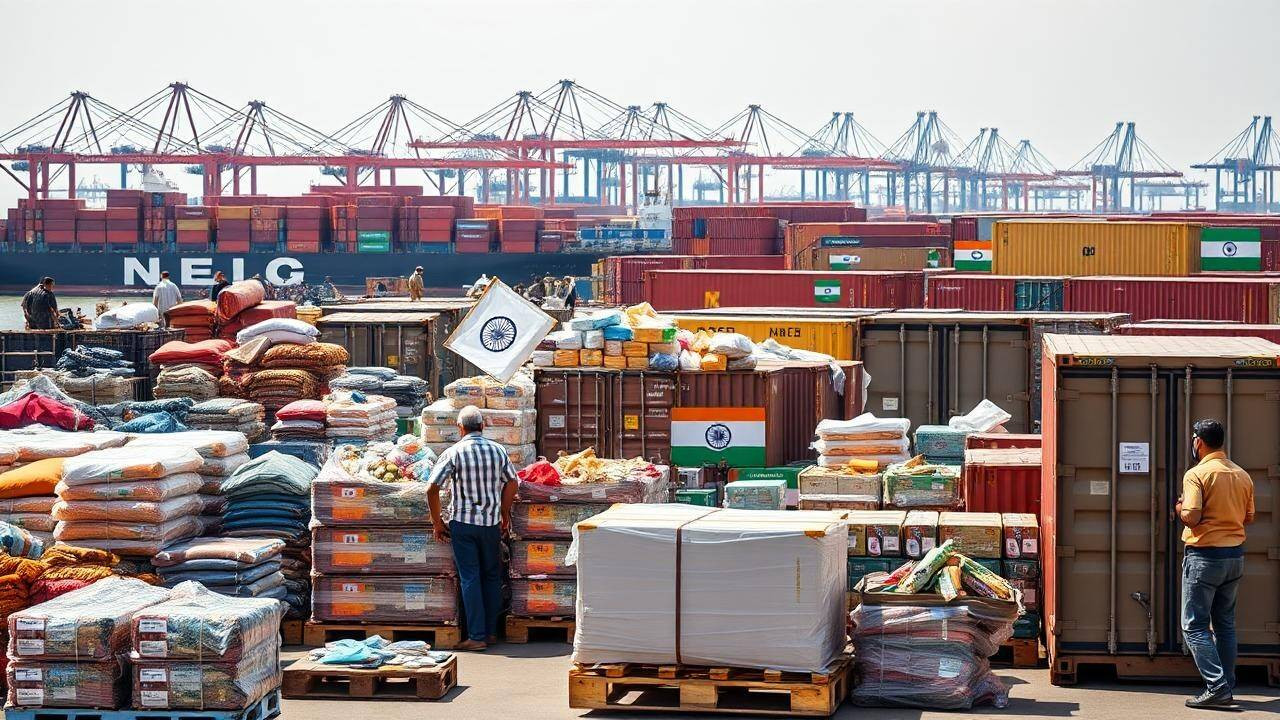India’s merchandise trade deficit saw a slight decrease in August 2025, according to a Union Bank of India report, primarily driven by increased gold imports for the festive season. However, the ongoing stalemate in the India-US trade deal continues to pressure trade dynamics, impacting export growth.
Navigating the Trade Winds: Will India’s Trade Deficit Really Shrink?
The economic forecast, much like predicting the weather, is a constant dance between observation and anticipation. Lately, the winds seem to be shifting regarding India’s merchandise trade deficit, hinting at a possible narrowing in August. Could we be seeing calmer seas ahead, or are there still storms brewing on the horizon? Let’s unpack the key factors influencing this complex situation.
For those unfamiliar, the merchandise trade deficit is simply the difference between the value of goods a country exports versus the value of goods it imports. A smaller deficit suggests a healthier trade balance and can contribute to overall economic stability. A persistent, high deficit, on the other hand, can put pressure on a nation’s currency and overall financial health.
The Golden Glow: Will Festive Demand Curb the Deficit?
One of the primary drivers potentially contributing to a smaller trade deficit is the anticipated surge in gold demand. With the festive season just around the corner, Indians traditionally flock to purchase gold, considered auspicious and a store of value. Increased domestic demand for gold is met in large part by imports. This year, however, there’s a different story. Stricter regulations and higher import duties on gold, aimed at curbing excessive imports and bolstering domestic refining, are likely pushing more people towards locally sourced gold. This shift is expected to slow down the pace of gold imports, thereby helping to reduce the overall import bill and narrowing the trade deficit.

Consider it like this: imagine a family deciding to buy fruit for a festive gathering. If they choose locally grown apples instead of imported mangoes, they’re contributing to a more balanced grocery bill. The same principle applies to the national level with gold.
US Tariff Shadows: A Looming Threat to Exports?
While the festive season’s golden glow might offer some respite, a darker cloud looms on the international stage: potential tariff hikes by the United States. The US remains a significant export destination for India, and any increase in tariffs on Indian goods could significantly impact export volumes.
The US economy’s current trajectory and political climate make predicting future trade policies extremely challenging. While the immediate impact of potential tariffs might not be fully reflected in the August figures, the long-term implications for India’s export competitiveness are definitely a cause for concern. It’s like trying to navigate a ship while a potential storm is brewing on the horizon. You can see the initial signs, but the full force and direction of the storm are still uncertain.
Other Factors Playing Their Part
Beyond gold and US tariffs, other factors are also shaping the trade landscape. Global commodity prices, fluctuations in the value of the Indian rupee, and the overall health of the global economy all contribute to the equation. For example, a decrease in global oil prices would reduce India’s import bill, given its heavy reliance on oil imports. Similarly, a stronger rupee would make imports cheaper.
Furthermore, the government’s ongoing efforts to boost domestic manufacturing through initiatives like “Make in India” could gradually reduce import dependence and strengthen export capabilities over time.
A Fragile Equilibrium: The Road Ahead
While the possibility of a narrowed trade deficit in August offers a glimmer of hope, it’s crucial to recognize that the situation is fluid and subject to a multitude of factors. The festive season’s impact on gold demand is a temporary phenomenon, and the potential threat of US tariffs remains a significant risk. The government must continue to explore new markets and diversify its export basket to mitigate this risk.
India’s trade relations with other nations will continue to play a role. To strengthen domestic production, explore the government’s Production Linked Incentive (PLI) scheme, which might be related.
In Conclusion: The merchandise trade deficit is a dynamic indicator reflecting a complex interplay of global and domestic forces. While August’s figures might offer a temporary breather, sustained efforts are needed to ensure a healthy and balanced trade relationship in the long run. The focus should be on strengthening export competitiveness, diversifying trade partnerships, and reducing dependence on volatile commodities. Only then can India truly navigate the trade winds and chart a course towards sustainable economic growth.







